AS SEEN IN Pond Boss Magazine: Written by Industry Expert Dave Beasley, Fisheries Biologist & Director of Fisheries
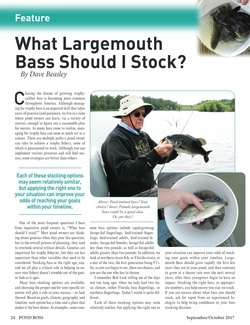 Chasing the dream of growing trophy caliber Largemouth Bass is becoming more common throughout America. Although managing for trophy bass is an acquired skill that takes years of practice (and patience), we live in a time where pond owners can learn, via a variety of sources, enough to figure out a reasonable plan for success. As many have come to realize, managing for trophy bass can seem as much art as a science. There are multiple paths a pond owner can take to achieve a trophy fishery, none of which is guaranteed to work. Although you can implement various processes and still find success, some strategies are better than others.
Chasing the dream of growing trophy caliber Largemouth Bass is becoming more common throughout America. Although managing for trophy bass is an acquired skill that takes years of practice (and patience), we live in a time where pond owners can learn, via a variety of sources, enough to figure out a reasonable plan for success. As many have come to realize, managing for trophy bass can seem as much art as a science. There are multiple paths a pond owner can take to achieve a trophy fishery, none of which is guaranteed to work. Although you can implement various processes and still find success, some strategies are better than others.
One of the most frequent questions I hear from inquisitive pond owners is, “What bass should I stock?” Most pond owners are thinking about genetics when they pose this question, but in the overall process of planning, they tend to overlook several critical details. Genetics are important for trophy fisheries, but they are less important than other variables that need to be considered. Stocking bass at the right age, size, and sex all play a critical role in helping to ensure your fishery doesn’t stumble out of the gate, or fade as it ages.
Many bass stocking options are available, and choosing the proper one for your specific situation will play a role in your success—or lack thereof. Based on goals, climate, geography, and timeline, each option has a time and a place that makes it the best choice. As examples, some common bass options include rapid-growing forage-fed fingerlings, feed-trained fingerlings, feed-trained adults, feed-trained females, forage-fed females, forage-fed adults less than two pounds, as well as forage-fed adults greater than two pounds. In addition, we look at northern strain fish, or Florida strain, or a mix of the two, the first generation being F1’s.
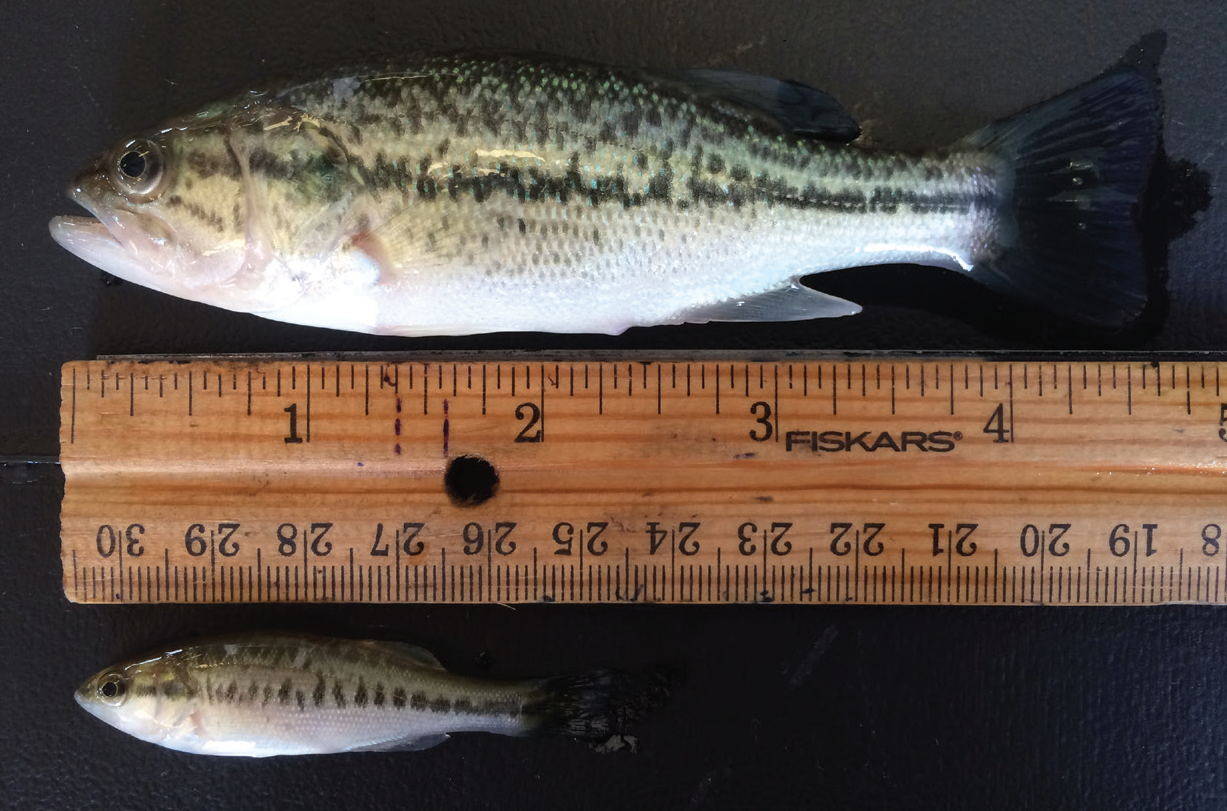 So, as you can begin to see, there are choices, and you are the one who has to choose. I remember Bob Lusk telling me of the days not too long ago when we only had two basic choices, either Florida bass fingerlings, or northern fingerlings. Today’s world is quite different. Each of these stocking options may seem relatively similar, but applying the right one to your situation can improve your odds of reaching your goals within your timeline. Largemouth Bass should grow rapidly the first few years they are in your pond, and then continue to grow at a decent rate over the next several years, after their youngsters begin to have an impact. Stocking the right bass, in appropriate numbers, can help ensure you stay on track. If you are unsure about what bass you should stock, ask for input from a professional fisheries management company to help bring confidence to your bass stocking decision.
So, as you can begin to see, there are choices, and you are the one who has to choose. I remember Bob Lusk telling me of the days not too long ago when we only had two basic choices, either Florida bass fingerlings, or northern fingerlings. Today’s world is quite different. Each of these stocking options may seem relatively similar, but applying the right one to your situation can improve your odds of reaching your goals within your timeline. Largemouth Bass should grow rapidly the first few years they are in your pond, and then continue to grow at a decent rate over the next several years, after their youngsters begin to have an impact. Stocking the right bass, in appropriate numbers, can help ensure you stay on track. If you are unsure about what bass you should stock, ask for input from a professional fisheries management company to help bring confidence to your bass stocking decision.
To help illustrate how stocking certain bass can make a difference, here are some real-world examples:
The first scenario is a pond owner with a four-acre fishery in the rolling hills of Kentucky. The owner is an avid outdoorsman looking to grow the biggest bass he can, within reason. They are managing for an intense biomass of forage fish using fish feeders and a fertilizing program. The pond was reset with rotenone prior to stocking forage fish in the fall of 2015. Based on his goals, two bass stocking options jump out as favorable—stocking an all-female population, or stocking rapid-growing fingerlings.
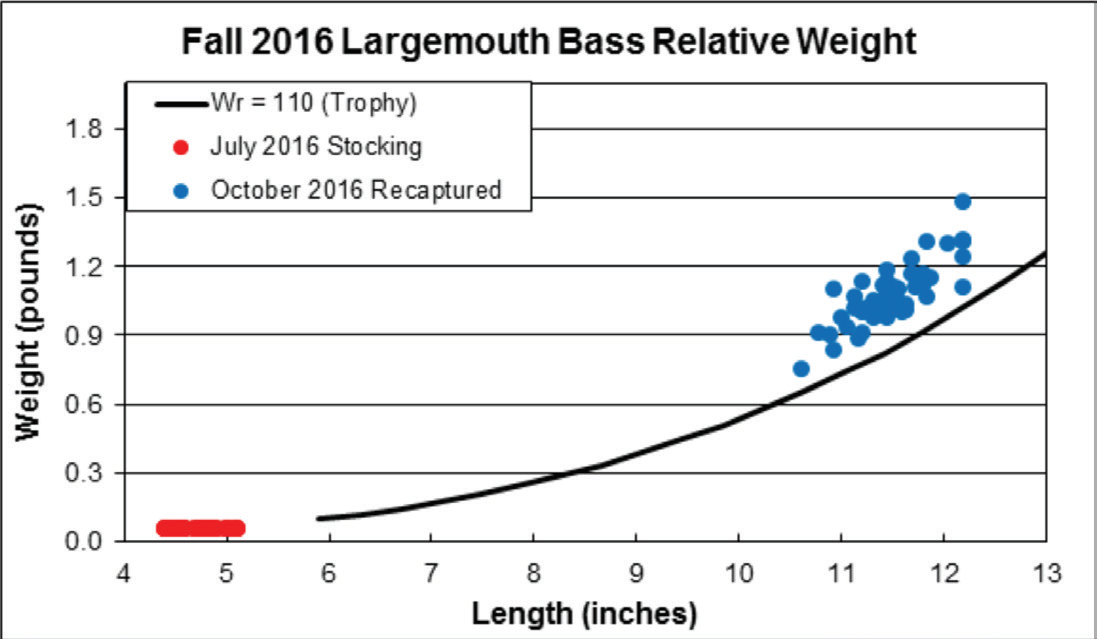
When the project initially started, the owner decided his fishery would receive limited fishing pressure. Based on this factor, an all-female bass population would typically be the best choice, since an all-female fishery does not require the ongoing harvesting of slot bass.
Although stocking all female bass made good sense to the decision makers, once the owner learned stocking month-old bass fingerlings, teamed with sound fisheries management techniques, could give his bass a higher potential growth ceiling, he favored stocking younger bass. He was willing to focus his harvesting effort to ensure he was successful. The biggest problem with stocking fingerlings is that you should expect them, as adults, to overpopulate. An all-female approach requires less harvesting, but you only add to the population via stocking. In July, 2016, ten months after forage fish were stocked, fingerling bass were added to the pond. They averaged four inches and were approximately six weeks old. These young fingerlings have better potential of growing to bigger sizes than one or two-year-old females. This is because the low number of fingerlings grow faster in a pond bursting with forage fish than a fish hatchery where bass are grown at higher densities with less available forage. In other words, those two-pound bass’ growth rates were influenced by hatchery conditions. The fingerlings, in this case, stand a healthy chance for some of them to be larger than three pounds at a similar age.
In the fall of 2016, three months after stocking fingerlings, the bass fishery was sampled to assess growth. Bass were approaching five months of age. They averaged 11.5 inches in length and weighed an average of 1 pound, with the best recaptured fish weighing 1.5 pounds. This owner’s bass should average three pounds at 18 months of age (fall 2017), with the best bass approaching the four-pound mark.
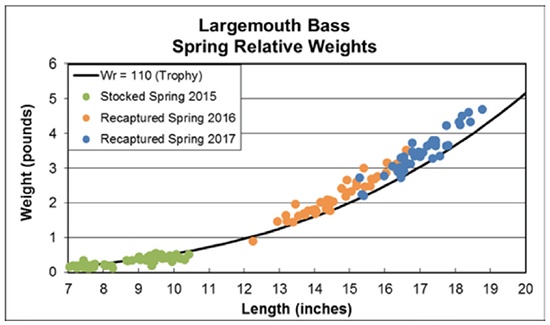
Based on our experience, if the owner had stocked all female bass, approximately 12 months old, in the early spring of 2016, rather than stocking fingerlings, the females would have likely averaged 8.5 inches in length and weighed an average of 0.3 pounds when being stocked—and then grown over 1.5 pounds that summer, reaching an average of 14 inches in length and weighed 2 pounds by fall when they were 18 months old. These estimates are based on averages from multiple datasets collected from similar projects. Based on our experience, stocking rapid growing forage-fed fingerlings in this pond should result in bass that average as much as one pound heavier at 18 months of age.
Since this pond owner’s goal is to grow bass with the best chance of reaching their full potential, stocking fingerlings was his best option, if he can commit to limiting bass recruitment via selective harvest. If he cannot, then stocking all female bass would have been a better fit. Although the fishery is currently trending well, risks associated with bass recruitment has not revealed itself yet. The bass just reached sexual maturity in the spring of 2017.
A second example, similar to the first, takes place in Virginia. The owner has a six-acre pond and wants to grow trophy bass. The pond is remote and will receive very little fishing pressure. Growing bass in the 8-pound range would be sufficient for him, and low catch rates are acceptable, if the bass are large. Since the pond will not receive enough fishing pressure to properly harvest intermediate size bass over the years, establishing an all-female bass population posed the best odds of success. This is because an all-female bass population, if managed properly, will have high probability of producing a large number of eight-pound bass, without the needed headache or risk associated with reproducing bass populations.
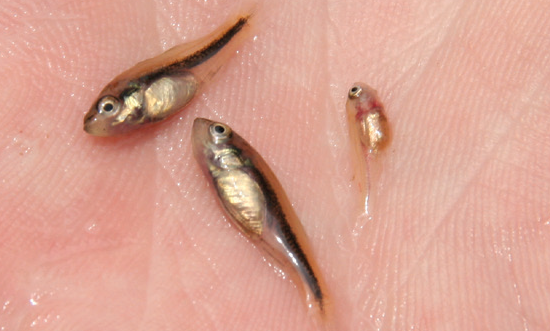 To properly do this, the fishery needed to be reset with rotenone, and then establish the forage base prior to stocking bass. The fishery’s productivity was increased using feeders and a fertilizing program. In the spring of 2015, one-year-old female bass were stocked, averaging 0.36 pounds. In the spring of 2017, these bass were just shy of three years old and averaged 3.5 pounds when sampled via electrofishing. The top producers hovered around 4.66 pounds. These bass are well on their way to reaching their target size, having grown an average beyond 1.5 pounds each year. Although these growth rates are not as aggressive as they could be, the approach poses a high probability of reaching the owner’s goals. High odds of success, teamed with the owner’s patience and the lower amount of management required, make this approach an ideal choice—for him.
To properly do this, the fishery needed to be reset with rotenone, and then establish the forage base prior to stocking bass. The fishery’s productivity was increased using feeders and a fertilizing program. In the spring of 2015, one-year-old female bass were stocked, averaging 0.36 pounds. In the spring of 2017, these bass were just shy of three years old and averaged 3.5 pounds when sampled via electrofishing. The top producers hovered around 4.66 pounds. These bass are well on their way to reaching their target size, having grown an average beyond 1.5 pounds each year. Although these growth rates are not as aggressive as they could be, the approach poses a high probability of reaching the owner’s goals. High odds of success, teamed with the owner’s patience and the lower amount of management required, make this approach an ideal choice—for him.
A third example is a four-acre pond located in Virginia. The owner bought the property in the late spring of 2017. His goal is to establish a high quality natural fishery as soon as possible. The pond was electrofished, which revealed the fishery was in poor condition. There were no fish larger than eight inches present. Additionally, the fishery had black crappie.
The owner had a goal to start fishing immediately, as well as to catch big fish. Since the fishery was out of balance and contained black crappie, it would have been ideal to reset the fishery with rotenone to eradicate all fish, then restock with forage fish and stock bass greater than two pounds. But, the pond owner was not open to the idea of resetting the fishery. So, instead, he decided to compromise on bass growth rates. He also decided to increase his annual fish stocking budget to help overcome the negative impact of Black Crappie. As many know, crappie are predators with a predisposition to reproduce and impact the base of the food chain. That’s not a good thing in a bass fishery. Additionally, he agreed to harvest undesired predator fish through angling, and if needed, through electrofishing.
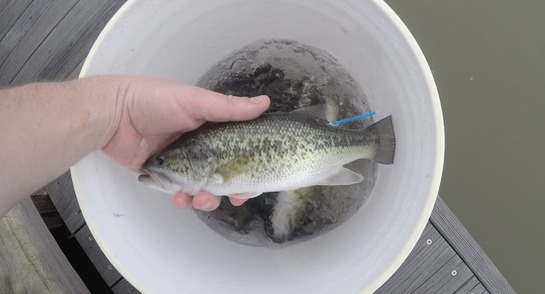 Trying to develop a fishery takes years, and forcing it early on with a poorly established forage base and lack of control over predator fish tends to diminish the growth potential of bass. How old were his fish? He didn’t know. In this scenario, one ideal solution would be the use of feed-trained bass. Stocking one-pound-plus feed-trained bass and feeding them to bypass the base of the food chain reduces the risk of hindering bass growth rates. In this case, the owner wanted a natural fishery, and was opposed to having bass trained to eat fish feed. The best solution was to stock Largemouth Bass greater than two pounds to overwhelm the aged fishery, and guide it toward bigger fish. These fish could be feed-trained or raised on forage fish. Ideally, they would be no more than two years old.
Trying to develop a fishery takes years, and forcing it early on with a poorly established forage base and lack of control over predator fish tends to diminish the growth potential of bass. How old were his fish? He didn’t know. In this scenario, one ideal solution would be the use of feed-trained bass. Stocking one-pound-plus feed-trained bass and feeding them to bypass the base of the food chain reduces the risk of hindering bass growth rates. In this case, the owner wanted a natural fishery, and was opposed to having bass trained to eat fish feed. The best solution was to stock Largemouth Bass greater than two pounds to overwhelm the aged fishery, and guide it toward bigger fish. These fish could be feed-trained or raised on forage fish. Ideally, they would be no more than two years old.
We located 2.5-pound bass raised on forage fish. One hundred twenty of these bass were stocked in June of 2017, just a few weeks after the owner closed on the property. This option provided him with immediate fishing while also giving the bass an opportunity to reach a decent size. Stocking smaller bass would have reduced bass growth potential due to the lack of sufficient small forage, teamed with the presence of Black Crappie. By stocking larger bass, he reduced the potential of the bass getting hung up and becoming stunted since these larger bass could consume both large and smaller forage. Not enough food means slower growth rates, even with young bass.
Growing trophy bass is a process that poses challenges throughout the entire life of your fishery. Some fisheries struggle from the beginning and fail to develop. Other fisheries establish great early on, and fade as bass age. Although there is a sense of the unknown related to this, the reality is many of the management strategies you implement—or do not—will lead you to success or failure. With all the unknowns related to working with Mother Nature and developing a trophy fishery, it is key that you set yourself up for success by stocking bass that give you the best odds possible.
Free Report: 6 Reasons to Invest in a Pro Fisheries Management Company
Contact the experts at 888-480-5253 for all of your lake, pond and fisheries management needs.
 David Beasley has over 12 years of experience growing and managing successful trophy fisheries. David earned a Bachelor of Science degree in Fisheries and Aquaculture from State University of New York in Cobleskill and is currently the Director of Fisheries for SOLitude Lake Management, servicing the eastern United States and offering fisheries consultations nationwide.
David Beasley has over 12 years of experience growing and managing successful trophy fisheries. David earned a Bachelor of Science degree in Fisheries and Aquaculture from State University of New York in Cobleskill and is currently the Director of Fisheries for SOLitude Lake Management, servicing the eastern United States and offering fisheries consultations nationwide.
SOLitude Lake Management is committed to providing full service lake and pond management solutions that improve water quality, preserve natural resources, and reduce our environmental footprint. Our services include lake, pond, wetland and fisheries management programs, algae and aquatic weed control, mechanical harvesting, hydro-raking, installation and maintenance of fountains and aeration systems, water quality testing and restoration, bathymetry, lake vegetation studies, biological assessments, habitat assessments, invasive species management and nuisance wildlife management. Services, consulting and aquatic products are available to clients nationwide, including homeowners associations, multi-family and apartment communities, golf courses, commercial developments, ranches, private landowners, reservoirs, recreational and public lakes, municipalities, parks, and state and federal agencies. Learn more about SOLitude Lake Management and purchase products at www.solitudelakemanagement.com.










